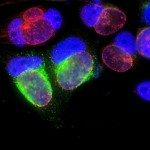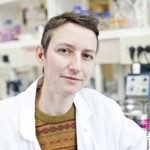Link to Pubmed [PMID] – 21324157
BMC Genomics 2011;12:109
BACKGROUND: Chlamydiae are obligate intracellular bacteria that multiply in a vacuolar compartment, the inclusion. Several chlamydial proteins containing a bilobal hydrophobic domain are translocated by a type III secretion (TTS) mechanism into the inclusion membrane. They form the family of Inc proteins, which is specific to this phylum. Based on their localization, Inc proteins likely play important roles in the interactions between the microbe and the host. In this paper we sought to identify and analyze, using bioinformatics tools, all putative Inc proteins in published chlamydial genomes, including an environmental species.
RESULTS: Inc proteins contain at least one bilobal hydrophobic domain made of two transmembrane helices separated by a loop of less than 30 amino acids. Using bioinformatics tools we identified 537 putative Inc proteins across seven chlamydial proteomes. The amino-terminal segment of the putative Inc proteins was recognized as a functional TTS signal in 90% of the C. trachomatis and C. pneumoniae sequences tested, validating the data obtained in silico. We identified a macro domain in several putative Inc proteins, and observed that Inc proteins are enriched in segments predicted to form coiled coils. A surprisingly large proportion of the putative Inc proteins are not constitutively translocated to the inclusion membrane in culture conditions.
CONCLUSIONS: The Inc proteins represent 7 to 10% of each proteome and show a great degree of sequence diversity between species. The abundance of segments with a high probability for coiled coil conformation in Inc proteins support the hypothesis that they interact with host proteins. While the large majority of Inc proteins possess a functional TTS signal, less than half may be constitutively translocated to the inclusion surface in some species. This suggests the novel finding that translocation of Inc proteins may be regulated by as-yet undetermined mechanisms.


